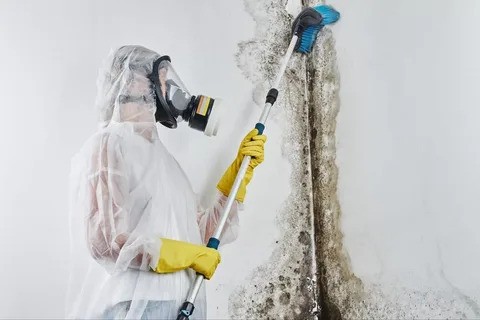
Mold growth in your home isn’t just an eyesore—it’s a serious issue that can affect your property’s structure and your family’s health. In Westlake, TX, where humidity and seasonal storms are common, the risk of indoor mold is higher than many homeowners realize. Understanding the right way to approach mold damage restoration in 2025 can save you time, money, and stress.
This guide outlines what causes mold, how to recognize it, and most importantly, how to handle its removal safely and effectively.
What Causes Mold Damage?
Mold thrives in moist, poorly ventilated areas. Common sources of mold in homes include:
-
Leaking pipes or roofs
-
Flooding or poor drainage
-
High indoor humidity levels
-
Poor ventilation in bathrooms or kitchens
Once mold takes hold, it spreads quickly—often within 24 to 48 hours—so early detection and response are crucial.
Signs You Might Have Mold Damage
Many homeowners don’t realize they have a mold problem until it becomes severe. Watch for the following signs:
-
Musty or earthy odor
-
Dark or discolored spots on walls, ceilings, or floors
-
Persistent coughing, sneezing, or allergic reactions indoors
-
Warped walls or peeling paint
-
Increased moisture or condensation
In Westlake, TX, these signs should not be ignored due to the region’s high humidity, especially during the rainy season.
Steps to Handle Mold Damage Restoration
1. Stop the Source of Moisture
Before you begin mold damage restoration, identify and fix the source of the moisture. Whether it’s a leaking roof, plumbing issue, or a damp basement, fixing the moisture problem is the only way to ensure mold won’t return after remediation.
2. Isolate Affected Areas
To prevent mold spores from spreading, isolate the affected area using plastic sheeting and seal off doorways and vents. Avoid using fans in mold-infested rooms—they can circulate spores throughout your home.
3. Use Proper Protective Gear
Mold can be harmful to your health, especially if inhaled. Always wear:
-
Gloves
-
N95 or higher-rated respirator
-
Goggles
-
Protective clothing
If the mold covers more than 10 square feet, it’s strongly recommended to call a professional.
4. Remove Contaminated Materials
Porous materials like drywall, carpeting, insulation, and ceiling tiles may need to be removed and safely discarded. Non-porous surfaces (like tile or metal) can often be cleaned using a commercial mold remover or a mix of water and detergent.
Do not use bleach on porous surfaces—it doesn’t penetrate deeply enough to kill mold at its root.
5. Dry and Dehumidify Thoroughly
After cleaning or removing materials, dry the area completely. Use dehumidifiers and fans, and keep windows open if weather permits. Mold loves moisture, so a dry space is your best defense against future growth.
When to Call in the Professionals
While minor mold problems can be handled DIY-style, significant or widespread mold damage requires professional intervention. Experts in mold damage restoration have the equipment, training, and safety protocols to remove mold without spreading spores or leaving behind harmful residues.
In Westlake, TX, professional mold remediation services understand the specific environmental conditions that cause recurring mold problems. They also use industrial-grade HEPA filters and sealants to prevent future outbreaks.
If you’re dealing with black mold or mold resulting from sewage or flood damage, never try to remove it yourself—call a licensed specialist.
Why Mold Should Never Be Ignored
Delaying mold removal can lead to:
-
Permanent damage to walls, floors, and furniture
-
Structural issues in wood framing and drywall
-
Respiratory problems, especially in children and the elderly
-
Costly long-term repairs
Mold not only damages your home but can also significantly lower its resale value. Timely action is essential.
Conclusion
Mold damage is a serious issue that demands immediate and careful attention. In 2025, homeowners in Westlake, TX face unique challenges due to climate and weather patterns. Learning how to identify, contain, and properly treat mold growth is key to keeping your home and family safe.
When in doubt—or when facing a large infestation—don’t hesitate to contact a professional mold damage restoration service. A trusted local expert will ensure that the job is done thoroughly, safely, and in compliance with all local regulations.
FAQs
1. How quickly does mold grow after a leak or flood?
Mold can begin to grow within 24–48 hours of water exposure if not properly dried.
2. Is mold always visible?
Not always. Mold can grow inside walls, under flooring, or in HVAC systems. A musty smell is often the first clue.
3. What is black mold, and is it dangerous?
Black mold (Stachybotrys chartarum) can produce toxic spores. It’s known to cause severe respiratory symptoms and should always be handled by professionals.
4. Can I stay in my house during mold remediation?
It depends on the extent of the damage. For small areas, it may be safe. For larger outbreaks, temporary relocation is often recommended.
5. Will my insurance cover mold damage restoration?
It depends on your policy. Mold from sudden water damage (like a burst pipe) is often covered. Mold from long-term neglect may not be.